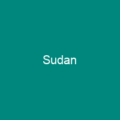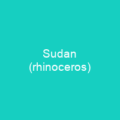Discovering Darfur: A Region with a Rich Past
Darfur is more than just a name; it’s a story waiting to be told. Imagine a place where history whispers through the sands and the past echoes in every step. Darfur, located in western Sudan, has an Arabic name that means ‘home.’ But its journey from Dardaju to Dartunjur under different tribal rule is anything but simple.
The Historical Tapestry of Darfur
Before 1874, Darfur was a sovereign sultanate. Can you imagine the grandeur and power it must have held? Then came Rabih az-Zubayr, who brought his warlord ways to the region. But the story doesn’t end there; in 1916, Anglo-Egyptian forces took control, marking another chapter in Darfur’s history.
Geography and Resources
Darfur is vast, covering about 493,180 square kilometers. It’s a land of semi-desert plateaus, volcanic peaks, and wadis—seasonal watercourses that bring life to the arid landscape. The region’s main towns are Al Fashir, Geneina, and Nyala, each with its own unique charm.
Water Beneath the Sands
Remote sensing has revealed a vast underground lake under Darfur, estimated at 49,500 km2. Can you imagine the potential this holds for the region? The area around Lake Fazzan was once lush and green, with 2,500 km3 of water. This discovery could be a game-changer for Darfur’s future.
Historical Dynasties
The Daju people created a kingdom in the Marrah Mountains in the 12th century. Later, the Tunjur and Keira dynasties expanded their borders, making Darfur a great power under the Keira dynasty until Egyptian rule destroyed it in 1875. The British annexed Darfur in 1916, but the region’s history is far from over.
Conflict and Humanitarian Crisis
Darfur has been in a state of humanitarian emergency since 2003 due to religious and ethnic rivalry, as well as conflict between farmers and herders. The Darfur conflict, one of the worst humanitarian disasters in the world, has led to over 480,000 deaths (Khartoum government disputes these numbers) and more than 3 million displaced people since 2003.
Peace Agreements and Future Prospects
A comprehensive peace agreement was signed on 31 August 2020 in Juba, South Sudan. However, the implementation of this agreement has been hindered by ongoing conflict. The region is divided into five federal states: Central Darfur, East Darfur, North Darfur, South Darfur, and West Darfur.
Language and Population
The languages spoken in Darfur include Daju, Erenga (or Sungor), Fongoro, Fulbe (or Fulfulde), Fur, Masalit, Sinyar, Tama, Midob, and Zaghawa. The region’s population was 7.5 million in 2008, with 52% aged 16 years or younger.
Current Challenges
The Sudanese Civil War (2023-Present) has brought significant fighting to the Darfur region, including the Masalit Massacres perpetuated by the Rapid Support Forces. The budget for Darfur was US$286 million in 2008, but much more is needed to address the region’s needs.
Conclusion
Darfur’s story is one of resilience and struggle, a tale that continues to unfold. As we look towards the future, it is crucial to support initiatives that can bring peace and prosperity to this region. The potential for Darfur lies not just in its past but also in its untapped resources and vibrant culture.

You want to know more about Darfur?
This page is based on the article Darfur published in Wikipedia (retrieved on January 27, 2025) and was automatically summarized using artificial intelligence.






